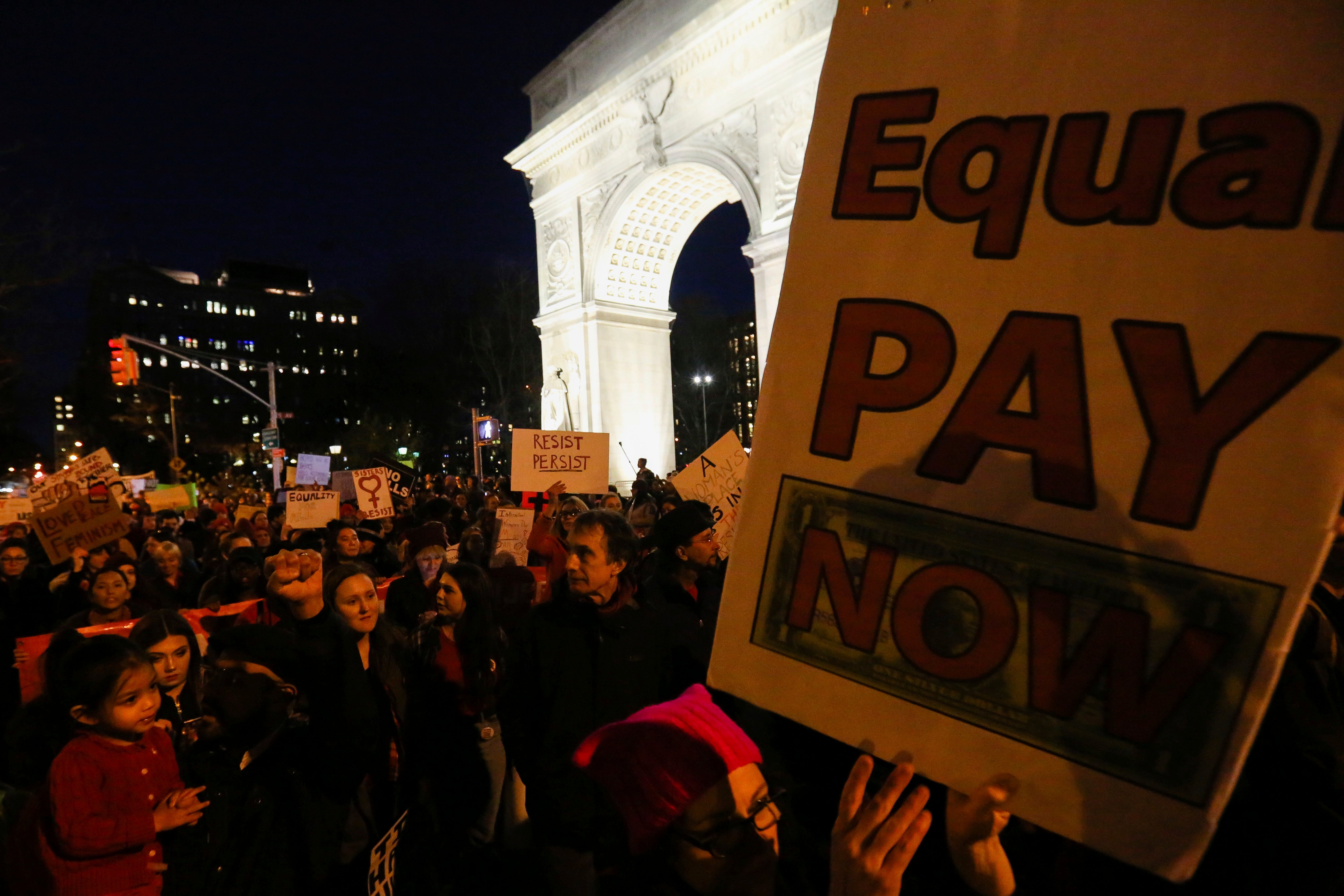
When millions took part in the Women’s March in January, a movement was born. The peaceful resistance continued Wednesday on International Women’s Day as organizers staged a one-day strike and economic boycott dubbed ‘A Day Without a Woman.’
Women across the country and world wore red to signify “revolutionary love and sacrifice,” avoided shopping or only patronized women or minority owned businesses, and those who had the option or inclination took the day off from work.
While participant estimates weren’t available at press time, there were large rallies in U.S. cities, including New York, Los Angeles and Washington, D.C., and a number of global gatherings. At least 13 people affiliated with the Women’s March, including co-chairs, national organizers and supporters, were arrested by the New York City Police Department after acts of civil disobedience that included blocking traffic outside Trump International Hotel in Manhattan. Most of the group—among them, social justice advocates Tamika Mallory, Carmen Perez, Linda Sarsour and Paola Mendoza—were reportedly released on Wednesday evening.
Prior to the strike, organizers spoke about the need for women to unite in solidarity.
“Historically, International Women’s Day was one of reflection, but we wanted to use the momentum from the march for action,” said Tabitha St. Bernard, a Brooklyn-based fashion activist and one of several Black women who helped stage the historic march.
“Women have birthed this nation, and many, like myself, are passionate about this country,” said St. Bernard, who was also active in ‘A Day Without a Woman’ planning. “To be impactful, it’s important that we take every opportunity to have our voices be heard.”
Subscribe to our daily newsletter for the latest in hair, beauty, style and celebrity news.
The day was intended to highlight the value that women of all backgrounds add to the socio-economic system, both in America and internationally. From celebs like Kerry Washington and Yara Shahidi expressing their support, to the Democratic Women’s Working Group and House Democrats dressed in red and standing on the steps of the Capitol, women and their male allies used the day to challenge decision-makers in the workplace, government and beyond.
There were large and small grassroots rallies and marches for equity, justice and human rights; read-ins and volunteering; and folks building community with each other. Organizers made a point of including trans and gender nonconforming people, as well as women with disabilities, noting that they can face heightened levels of discrimination, social oppression and political targeting.
While women in the U.S. have collectively made great strides, the undervaluation of women’s work, vulnerability to discrimination, sexual harassment, job insecurity, equal pay, and family leave remain pressing issues.
“There are challenges across the board, but the realities that Black women face are heightened,” said Janaye Ingram, a Civil Rights activist and national organizer who served as head of logistics during the march. “One critical area is pay equity.”
According to the Institute for Women’s Policy Research (IWPR), a nonprofit think tank in Washington, D.C., men still earn significantly more than women. Women’s median weekly earnings for full-time work were $749 in 2016, compared with $915 for men.
Moreover, Black women’s weekly earnings are only 68 percent of White men’s, and the median weekly earnings of Latino women—just 62 percent of White men’s—are so low that they would qualify a family of four for food stamps.
There has been some progress in that median weekly earnings have increased significantly for women of all major race/ethnic groups except for Asian women. Yet, experts say this increase has not made a significant dent in large earnings disparities.
“…Progress has been glacially slow for so long,” said IWPR President Heidi Hartmann, Ph.D. “We need to continue the investment in policies that can close the wage gap, especially for women of color, such as access to good jobs, child care, and paid leave, along with reduced discrimination.”
Still, headway on closing the annual wage gap has also slowed in recent years. If current trends continue, IWPR predicts women won’t see equal pay until the year 2059. Women of color may have to wait even longer: Black women might not see pay equity until 2124. Hispanic women will wait even longer at 2248.
Cassady Fendlay, a Women’s March spokesperson, said the one-day strike was intended to be one “where women feel empowered to take a stance on their value in the workplace and the world beyond.”
The group is planning other actions in the coming weeks.